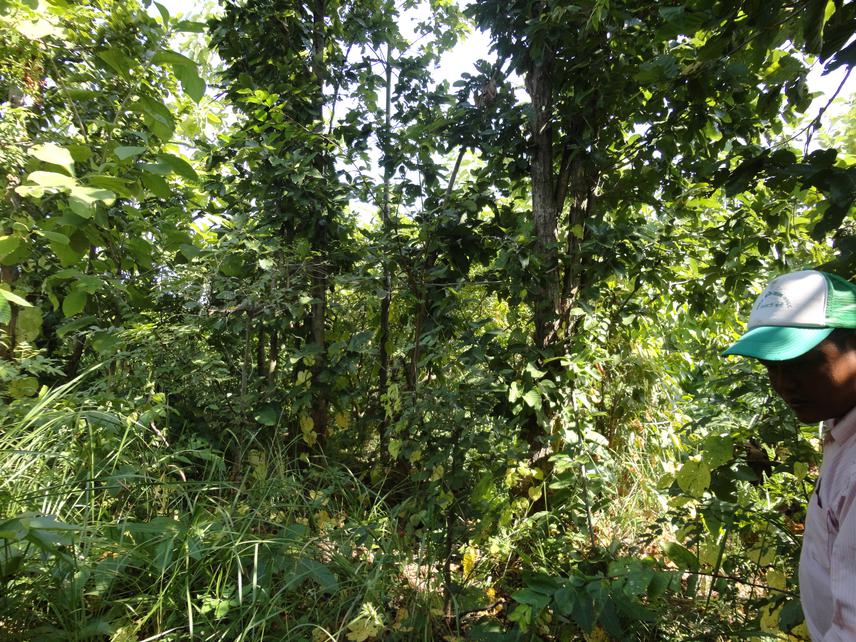Anjana Giri
The aim of the study is to analyse the effect of different scale of anthropogenic disturbances in the vegetation structure and regeneration of dominant plant species.

Regenerated forest site.
The Balajhar community forest situated in the Churia range is suffering from the problems of degradation and over exploitation of natural resources. Degradation is mostly associated with illegal timber harvesting, over-grazing and extraction of NTFPs. Likewise, forest fire, inappropriate agriculture practices, loss of biomass and biodiversity, reduced crown coverage of the forest, etc. are the common problems of the study site. Additionally, the forests in the study site have strong interconnections and inter-linkages with neighbouring eco-regions and provide valuable environmental services.
Various organizations have started restoration and management of Churia range, without considering much emphasis on in-depth scientific researches, as a result satisfactory outputs are not obtained. It is well understood that detail scientific knowledge through integrated research can give better results for the conservation, management and restoration of the Churia ecosystem. Based on the above background the study has been planned to conserve Balajhar community forest, as this site is much degraded and directly need restoration and conservation.
The study aims to:
- Assess the present environmental conditions of forest ecosystem with the help of ecological data including forest structure/condition, regeneration, productivity, carbon stock and identification of sensitive habitats of plants.
- Prepare a comprehensive list of services provided to the community by forest ecosystem.
- Assess the applicability of ecosystem services for better valuing of natural resources
- Preparation of baseline data for the conservation and management of Balajhar Community forest.
The outcome of the research will provide baseline information of anthropogenic impacted forest ecosystem and can be used as guidelines for the forest management. Additionally, the result will be used to create awareness among the local communities to mitigate the burning issues regarding forest degradation, deterioration of natural resources and habitat, etc. The data on ecosystem services provided by the forests such as carbon storage/sequestration and biodiversity conservation can be expanded for appropriate financial benefits which can provide incentives to community forest user groups to maintain the identified services.